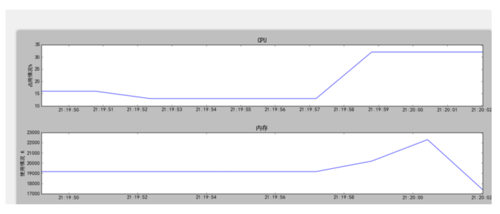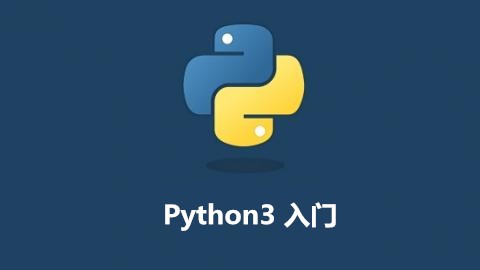monkey 压力测试android
Monkey的特征
测试的对象仅为应用程序包,有一定的局限性。
Monkey测试使用的事件流数据流是随机的,不能进行自定义。
可对MonkeyTest的对象,事件数量,类型,频率等进行设置。
Monkey的基本用法
基本语法如下:
$ adb shell monkey [options]
如果不指定options,Monkey将以无反馈模式启动,并把事件任意发送到安装在目标环境中的全部包。下面是一个更为典型的命令行示例,它启动指定的应用程序,并向其发送500个伪随机事件:
$ adb shell monkey -p your.package.name -v 500
分析日志
通过Android trace文件分析死锁ANR实例过程
system/build.prop 日志文件主要记录手机系统信息,如版本,型号,品牌
adb logcat 导出日志文件
monkey.ini 配置文件
cmd=adb shell monkey -p com.dgm.user --throttle 500 --ignore-timeouts --ignore-crashes --monitor-native-crashes -v -v package_name=com.dgm.user logdir=d:\android remote_path=d:\android_server phone_msg_log=d:\android_temp\phone.txt sum = 100 - activity = com.dgm.user.SplashActivity exceptions=['NullPointer','IllegalState','IllegalArgument','ArrayIndexOutOfBounds','RuntimeException','SecurityException']
throttle 每次事件等待500毫秒
sum 定义随机事件数
exceptions 异常定义,用于后面扩展
结果生成为可视化图片 使用的是matplotlib

Paste_Image.png
当然可以看日志文件
代码分析
获得cpu-men
# -*- coding: utf-8 -*-import subprocess
pkg_name = "com.dgm.user"cpu = []
men = []def top_cpu(pkg_name):
cmd = "adb shell dumpsys cpuinfo | grep " + pkg_name
temp = [] # cmd = "adb shell top -n %s -s cpu | grep %s$" %(str(times), pkg_name)
top_info = subprocess.Popen(cmd, shell=True, stdout=subprocess.PIPE, stderr=subprocess.PIPE).stdout.readlines() for info in top_info:
temp.append(info.split()[2].decode()) # bytes转换为string
# print("cpu占用:%s" %cpu)
for i in temp: if i != "0%":
cpu.append(i.split("%")[0]) return cpudef get_men(pkg_name):
cmd = "adb shell dumpsys meminfo %s" %(pkg_name)
print(cmd)
temp = []
m = []
men_s = subprocess.Popen(cmd, shell=True, stdout=subprocess.PIPE, stderr=subprocess.PIPE).stdout.readlines() for info in men_s:
temp.append(info.split()) # print("内存占用:%s" %men[19][1].decode()+"K")
m.append(temp) for t in m:
men.append(t[19][1].decode()) return men入口代码
import monkeyConfigfrom adb_common import AndroidDebugBridge as aiimport matplotlibBase as mtimport MenCpu as mimport datetime as dt
CPU = [[],[]] # time,使用情况MEN = [[],[]] #当前时间,和内存使用情况# 得到手机信息def getPhoneMsg(cmd_log):
l_list = []
f = open(cmd_log, "r")
lines = f.readlines() for line in lines:
line = line.split('=') #Android 系统,如anroid 4.0
if (line[0] == 'ro.build.version.release'):
l_list.append(line[1]) #手机名字
if (line[0]=='ro.product.model'):
l_list.append(line[1]) #手机品牌
if (line[0]=='ro.product.brand'):
l_list.append(line[1])
f.close() return l_list#开始脚本测试def start_monkey(cmd, logdir, now1, logcatname):
print(cmd)
os.popen(cmd) # os.kill()
#print"使用Logcat导出日志"
cmd2 = "adb logcat -d >%s" % logcatname
os.popen(cmd2) #print"导出traces文件"
tracesname = logdir + "\\" + now1 + r"traces.log"
cmd3 = "adb shell cat /data/anr/traces.txt>%s" % tracesname
os.popen(cmd3)if __name__ == '__main__':
ini_file = 'monkey.ini'
if os.path.isfile(ini_file): if ai().attached_devices():
mc = monkeyConfig.baseReadnin(ini_file)
ai().open_app(mc.get_package_name(), mc.get_activity())
os.system('adb shell cat /system/build.prop >'+mc.get_phone_msg_log()) #存放的手机信息
ll_list = getPhoneMsg(mc.get_phone_msg_log()) # monkey开始测试
sum = mc.get_sum()
temp = ""
monkeylog = ""
start_monkey(mc.get_cmd(), mc.get_logdir(), mc.get_now(), mc.get_logcatname()) for i in range(sum):
time.sleep(1)
print(i)
dn = dt.datetime.now()
CPU[0].append(dn)
m.top_cpu(mc.get_package_name())
MEN[0].append(dn)
m.get_men(mc.get_package_name())
monkeylog = open(mc.get_logdir() + "\\" + mc.get_now()+"monkey.log")
temp = monkeylog.read()
monkeylog.close() if temp.count('Monkey finished')>0:
print("测试完成咯")
CPU[1].append(m.cpu)
MEN[1].append(m.men) # geterror(ll_list, mc.get_log(), mc.get_remote_path(), mc.now) 错误显示
mt.cpu_men_plots(CPU, MEN) break
else:
print("设备不存在") else:
print(u"配置文件不存在"+ini_file)结果以曲线图展示
def cpu_men_plots(cpu, men):
import matplotlib.pyplot as pl import matplotlib.dates as mdates import datetime # 处理异常数据,有时候得到数据(占用情况)会比时间多一次循环的数据,造成xy的数据不一致,而引起报错
if len(cpu[0]) != len(cpu[1][0]):
cpu[1][0]= cpu[1][0][0:len(cpu[0])] if len(men[0]) != len(men[1][0]):
men[1][0]= men[1][0][0:len(men[0])]
print(men[0])
print(men[1][0])
a1 = pl.subplot(311)
a1.set_title("CPU")
a1.set_ylabel("占用情况%")
a1.plot(cpu[0], cpu[1][0])
a1.xaxis.set_major_locator(mdates.SecondLocator(interval=1))
a1.xaxis.set_major_formatter(mdates.DateFormatter('%H:%M:%S'))
a2 = pl.subplot(312)
a2.set_title("内存")
a2.set_ylabel("使用情况 K")
a2.plot(men[0], men[1][0])
a2.xaxis.set_major_locator(mdates.SecondLocator(interval=2))
a2.xaxis.set_major_formatter(mdates.DateFormatter('%H:%M:%S')) # a3 = pl.subplot(313)
# a3.set_title("流量")
# a3.set_ylabel("使用情况 K")
# a3.plot(x,list2)
# a3.xaxis.set_major_formatter(mdates.DateFormatter('%H:%M:%S'))
# a1.margins(x=0.2)
pl.tight_layout()
pl.show()更多请参考我的源码
作者:望月成三人
链接:https://www.jianshu.com/p/f79493d431ff

 随时随地看视频
随时随地看视频



